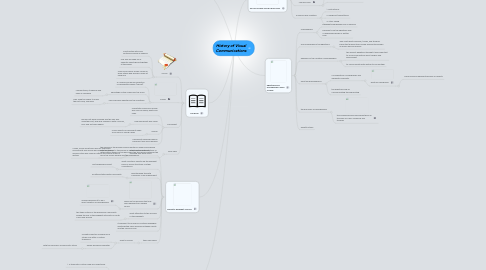
1. 8,000 BC Cuneiform and the Sumerians
1.1. Prior knowledge pf the Sumerians
1.1.1. 1. A theocratic culture ruled by a priest king.
1.1.2. 2. Skilled artisans who created vases, bowls and other types of pottery
1.1.3. 3. Music was an important part of their life
1.2. Cuneiform
1.2.1. a form of written language used to keep track of the many business transactions in Sumer
2. Phonetic Alphabet 1050 BC
2.1. What are two distinct styles of lettering that were used?
2.1.1. a rigid, formal script was used for important manuscripts and official documents; a quicker, informal style was used for letters and routine types of writing
2.2. What long term effects did the alphabet have on social structures of other civilizations?
2.2.1. first widespread script
2.3. hypothesized ties with cuneiform or an independent
2.3.1. all letters started with consonants
2.4. based on the principle that one sign represents on spoken sound
2.4.1. scholars believed it to be a direct variation of hieroglyphics
2.5. What attributed to the success of the alphabet?
2.5.1. the trade culture of the phoenician merchants spread the use of the alphabet into parts of North Africa and Europe
2.6. it allowed it to be used in multiple languages; disintegrated class divisions between royalty and the common man
2.7. they used serifs
2.7.1. What is a serif?
2.7.1.1. a slight projection finishing off a stroke of a letter in certain typefaces
2.7.1.2. Where did serifs originate?
2.7.1.2.1. with the carving in of words into stone
3. The Linotype Machine
3.1. what led to the invention?
3.1.1. looking for an easier way to transcribe notes and legal briefs and to produce multiple copies
3.2. christopher sholes created the only commercially successful typewriter
3.3. who would benefit first from the linotype machine?
3.3.1. Stenographers
4. The Book
4.1. Scrolls
4.1.1. Constructed with long continuous piece of papyrus
4.1.2. Can also be made up of separate sheets glues together at the edges
4.1.3. some scrolls were simply rolled up while others had wooden rollers at each end
4.2. Codex
4.2.1. A covered and bound collection of handwritten pages (a book)
4.2.2. advantage of the codex over the scroll
4.2.2.1. compactness, sturdiness and ease of reference
4.2.3. The codex was adopted by the Christians
4.2.3.1. They used the codex to make the first book, The Bible
4.3. Parchment
4.3.1. a substrate made from animal skin such as sheep, goats and cows
4.3.2. How parchment was made
4.3.2.1. hair and fat were removed and the skin was smoothed out, hide was soaked in water. calcium, flour and salt were added
4.3.3. Velllum
4.3.3.1. a finer quality of parchment made from skins of young calves
4.3.4. Parchment replaced papyrus because it was more durable
4.4. Dark Ages
4.4.1. the decline of the Roman Empire resulted in fewer books being created, this led to the period of cultural and economical deterioration known as the dark ages; the time period between the fall of the roman empire and the renaissance
5. 30,000 yrs ago CAVE PAINTINGS
5.1. Mans first attempt of visual communication
5.2. Lascaux Cave
5.2.1. Discovered in Lascaux, France in 1940 by four teenage boys
5.2.2. closed to the public in 1963 due to the carbon dioxide damage emitted from tourists
5.3. 3 reasons why created?
5.3.1. 1. Instructional
5.3.2. 2. Religious/Superstitious
5.3.3. 3. Story Telling
6. Egyptians and Hieroglyphics 5200 yrs ago
6.1. Hieroglyphics
6.1.1. believed to be derived from cuneiform
6.1.2. believed to be the Egyptians way of expressing words in written form
6.2. Prior knowledge of the Egyptians
6.2.1. They built great pyramids, tombs, and temples. inside the temples they carved and printed images on every wall and surface
6.3. Reasons for the creation of hieroglyphics
6.3.1. the ancient Egyptians thought it was important to record information about religion and government
6.3.2. to communicate with writing to one another
6.4. What are hieroglyphics?
6.4.1. a combination of logographic and alphabetic elements
6.4.1.1. what are logograms?
6.4.1.1.1. visual symbols representing ideas or objects
6.4.2. the Egyptians way of communicating through writing
6.5. the discovery of hieroglyphics
6.5.1. the invading armies discovered them on the walls of caves pyramids and temples
